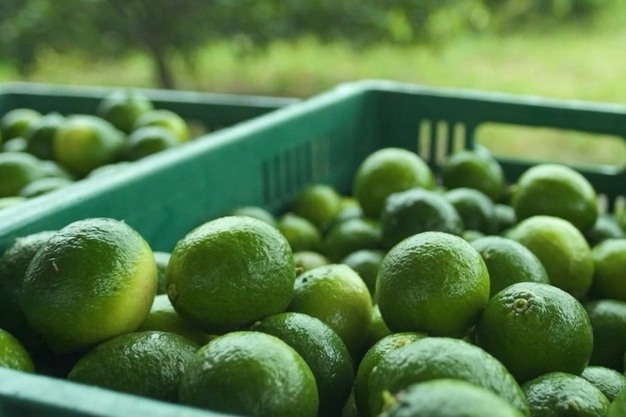Demand on limes has seen a notable increase in the last week. "Foodservice, for example, was very slow in January and February, but especially in the last week, it's picked up quite a bit," says Dax Cooke, head of sales for Farm Direct Partners. He adds that retail demand has been fairly steady and increasing since the beginning of the year.
Why the change? "The foodservice side is coming back with restaurant sales increasing. There's been St. Patrick's Day, the NCAA tournament right now, and things are ramping up for Easter, which we're forecasting to be stronger on retail demand. I'm seeing more growth in foodservice and wholesale in the last week than I have seen in two months," says Cooke.
Meeting that demand is lime supply from a few growing regions, and generally, larger sizes are becoming less available–a situation that should last through the end of next week. Meanwhile, smaller sizes, such as 230s and 250s, are more available.
Supply from Peru
From Peru, quality has been average on small fruit. "Large fruit has been lighter in color, and pricing out of Peru has been fairly stable," says Cooke.
 © Farm Direct Partners
© Farm Direct Partners
Over in Colombia, its limes have good quality, and pricing is also stable. While the rains have set in and blanching is a bit higher at this time of year, that should only last another two to three weeks before the pruning schedules start.
As for Mexico, larger sizes this week have increased in availability, and the quality has been fair. "It's requiring a bit more rework to get to the greener quality, but I think that's everybody at this time of year," says Cooke, adding that pricing is starting to increase on limes from Mexico.
The effect of tariffs
Mexico also awaits word on the potential 25 percent tariffs on product imported into the U.S., which are currently on pause until April 2. "A few weeks ago, we had three days of tariffs implemented, which immediately sent prices up. So if tariffs do come in, the fruit cost itself, minus transportation and material costs, will be with tariffs. If it's 25 percent, that will likely go straight on top of the price for McAllen crossings," says Cooke.
With the looming tariffs, Cooke notes that shifts are happening to source limes from multiple regions. "Pretty much everybody is exploring new supply outlets, he says.
He also adds that demand tends to be fairly elastic on limes, so when the price drops, sales generally increase. "It will ultimately matter what's important to customers. If it's pure quality, those who are willing to pay for it won't see much change in quality, though their price could go up. Customers who aren't as concerned about origin are going to sell a lot more volume," he says.
 For more information:
For more information:
Dax Cooke
Farm Direct Partners
dax@farmdirectfruit.com
https://www.farmdirectfruit.com/
